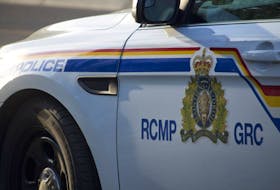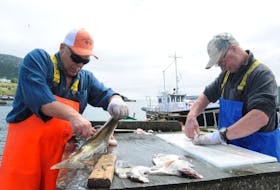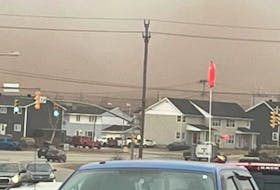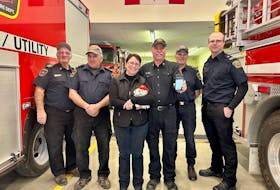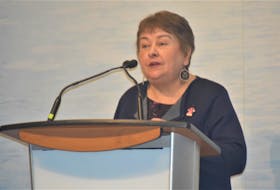
The Department of Fisheries and Oceans (DFO) Canada announced Thursday an agreement had been reached with the Royal Ontario Museum to retrieve the skeletons of the two blue whales that have washed ashore at Trout River and Rocky Harbour.
The responsibility of getting rid of the decaying carcasses before the smell becomes a major problem falls immediately to the municipalities on whose beaches the leviathans have landed. Next in line in responsibility would be the provincial government since the animals are above the high-water mark.
The monkey wrench in the mix is that blue whales are an endangered species under the federal Species At Risk Act, and a special permit from DFO must be obtained by anyone willing to move the remains.
While the Royal Ontario Museum has stepped forward as willing to take on the costly removal, local groups feel the region should still be able to benefit from being the final resting place for at least one of the whale skeletons.
Paul Wylezol is chairman of a committee trying to establish a UNESCO geopark in western Newfoundland that takes in the four rock formations containing the Earth’s exposed mantle.
Trout River is at the foot of one of those ophiolite formations, the Tablelands, and Wylezol’s committee believes a blue whale skeleton is the perfect addition to the area’s natural history.
“We’re fine with the Royal Ontario Museum and the feds coming to clean up the whales, but we want at least one of the skeletons to stay in Trout River to go towards an interpretation centre or display in the future for the geopark,” Wylezol told The Western Star Friday.
“There are two skeletons and we think that would be only a reasonable compromise. The museum can have one and we want the other one.”
The committee is sending a letter to the museum and Fisheries and Oceans Minister Gail Shea, requesting such an arrangement be worked out.
Wylezol urged both the provincial government and opposition MHAs, as well as municipal governments and local residents, to all insist that one of the whale skeletons be used as a tourism draw in western Newfoundland.
Humber-St. Barbe-Baie Verte MP Gerry Byrne supports the idea. He said there should be an effort made to forge a partnership between DFO, the museum, the province, Parks Canada and others to make this opportunity a reality.
“This is an extremely high-value find and there is a reason the Royal Ontario Museum wants it: because it is a chance of a lifetime,” said Byrne.
“For us to just pass that by when there are two skeletons would be a real shame and a real loss to the interpretive value of what Gros Morne National Park has to offer.”
Byrne said the blubber from the whales could also be sent to the UNESCO site at Red Bay for use in recreating the whale oil-rendering process used by Basque whalers at that historic site centuries ago.
The Western Star asked the Department of Tourism, Culture and Recreation for an interview about whether it was making any effort to turn one of the dead whales into a tourist attraction.
No interview was granted, but a department spokesperson said there was no specific effort to do so at this point.
“The Department of Tourism, Culture and Recreation supports the promotion of the province as a tourist destination through initiatives such as its marketing program,” said the emailed response.
“The acquisition of a whale carcass for tourism purposes is not within the mandate of the department.”
The email went on to say the Royal Ontario Museum has the capacity for an exhibit of this magnitude.
“The Rooms has a positive working relationship with the Royal Ontario Museum which allows for collaboration on exhibits,” reads the email.
“There are ongoing opportunities for various travelling exhibits, and the blue whale exhibit could potentially be considered in the future.”
The Western Star also asked the Royal Ontario Museum if there was any consideration being given to having one of the blue whale skeletons become an exhibit based in Newfoundland and Labrador.
The only response received as of deadline was an email that the museum’s communications officials would look into whether it was being considered.
The Western Star

